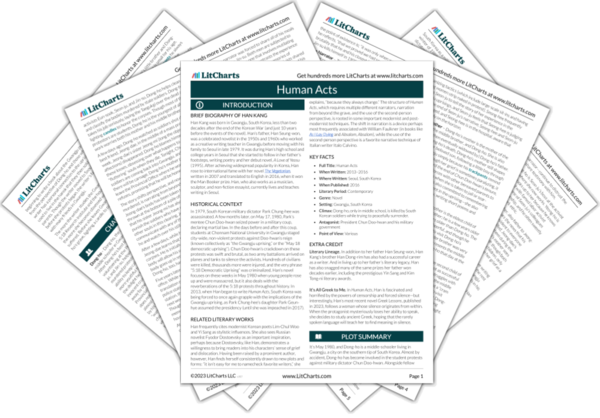AI ToolsNew
Tools to make learning and teaching easier
|
Previous
Chapter 6: The Boy’s Mother, 2010
|
Human Acts: Epilogue: The Writer, 2013 Summary & Analysis |
Next
Themes
|


Upgrade to unlock the analysis and theme tracking for all of Human ActsHuman Acts!
Get LitCharts A+